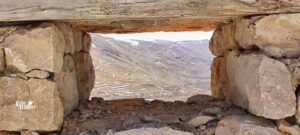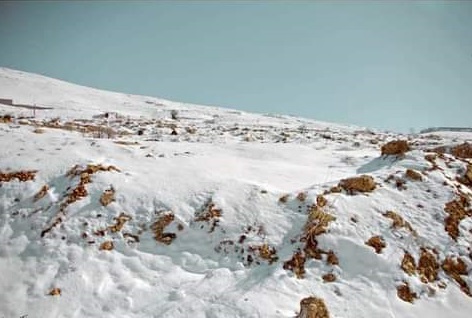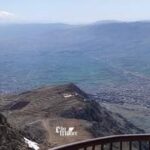Since ancient times, the mountains have always been a shelter for people whether they were runaways, wanted to clear their minds, or, as in our case here, to worship their gods.
Younan Mount (Jonah Mount) was one of these mountains that monks turned to in order to worship their Creator.
What distinguishes Younan Mount is the monastery located in it, Jonah Monastery, which was a Roman temple, discovered in 1872 by the British Consul in Damascus, Richard Burton, and since then the site remained neglected and abandoned.
Younan Monastery is located in the Eastern Lebanon Mountains at an altitude of 2107m. , overlooking the plains of Zabadani, Bloudan, Serghaia and Ain Hour, as well as the Lebanese Bekaa Valley.
 Burton mentioned the tradition which links this site to a person named Jonah Al-Kitabi, to whom the name of the site goes back, “Le Monastere du Prophet Jonas”.
Burton mentioned the tradition which links this site to a person named Jonah Al-Kitabi, to whom the name of the site goes back, “Le Monastere du Prophet Jonas”.The Consul described the site as the remains of a rectangular building with a long wall on the north side (8m,66cm), and on the south there is the temple’ wall (1m,95cm) away.
Burton also inferred on the site several stone piles, one of which he described as a block of Frieze. The other piles are parts of columns and cornerstones, decorative wall stone piles and stone door beams.
In addition to a votive structure engraved with Greek inscriptions, there is a dry well in the southwest of the building (4m,87cm), and near the well, Burton found a cross inscribed on a rock. He noticed that some of the large temple stones were used to make smaller ones, which indicates that the temple has been converted to a church.
Consul Richard Burton mentioned in his writings that the French diplomat “Julien Gérard de Real” had visited the area in 1866, but did not see the archaeological site. De Real mentioned the site under the name “Palace of Greece ”, and that it is not a Greek or Roman site, but rather a structure for the early or ancient peoples of the region.
Geologist Louis de Bertrat took photographs of carved inscriptions. These images are the only witness to these artifacts that do not exist today, and which were interpreted by the inscription scholar Mutted where he mentioned: “For the peace of the emperors,” which means that the monastery of the Prophet Jonah, is a Roman village monastery from the Imperial era, and it is similar to the Roman monasteries located in the neighboring villages on the heights.
Several years ago, exploratory marches began at the invitation of the Syrian Exploration and Documentation Society as a form of reviving this mountain because of its spiritual attraction, as it is considered a historical monument that attracted devotees since ancient times.
Najla Khoury



